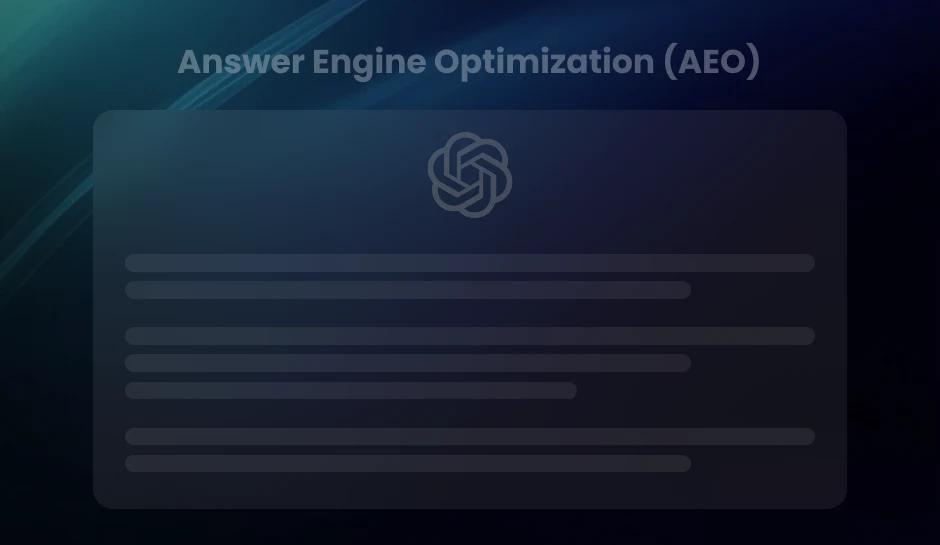
Cracking the Code: How Attribution Analysis Redefines Modern Marketing Strategy
Attribution analysis redefines modern marketing by uncovering which channels truly drive conversions. This blog breaks down attribution models, incrementality testing, and data-driven strategies that help marketers spend smarter, personalize better, and convert faster.
Marketing no longer operates in a straight line. Customers today interact with brands across dozens of digital and offline touchpoints-search ads, email campaigns, product pages, social media stories, and more before purchasing. Each leaves a fingerprint on the decision-making process, yet not everyone is created equal. This is where attribution analysis steps in.
Attribution analysis clarifies what drives conversions by mapping out which channels and interactions influence customer behavior. Gone are the days of guesswork or relying solely on last-click models. Teams use attribution models-first-touch, linear, time decay, and algorithmic to quantify performance and allocate budget based on impact. Every stage in the funnel becomes visible, and every touchpoint is measurable.
Want to know why a prospect clicked “buy now”? Which campaign nudged them forward? Attribution analysis doesn’t just answer these questions; it defines how marketers build smarter, data-informed strategies that convert.
Breaking Down Attribution Analysis: Turning Data Into Strategic Advantage
Defining Attribution Analysis in the Context of Marketing
Attribution analysis in marketing refers to evaluating customer interactions across multiple touchpoints and determining which channels contribute to desired outcomes-typically conversions or revenue. Rather than making decisions based on assumptions or siloed data, marketers use attribution analysis to tie marketing activities directly to business performance.
For instance, consider a customer journey involving a Google search ad click, a visit to a landing page, a follow-up email, and a final purchase triggered by a retargeting ad. Attribution analysis quantifies the impact of each interaction, applying data-driven logic to assign measurable value to each step. This allows for budget allocation, message timing, and channel prioritization precision.
The Importance of Assigning Credit to Marketing Channels
Assigning credit to marketing channels clarifies campaign performance. Without it, measurement relies on guesswork. For example, attributing 100% of a sale to the last click misrepresents the influence of awareness-stage efforts, such as paid social or SEO. Incorrect attribution skews budget decisions, undervaluing channels that play critical but indirect roles in conversion.
By distributing credit across the full path to purchase, decision-makers can recognize underreported contributors and avoid overinvesting in channels with inflated metrics. As campaigns stretch across web, mobile, email, paid media, and offline channels, credit assignments must reflect reality. This changes how marketing efforts are evaluated, optimized, and repeated.
How Attribution Analysis Benefits Campaigns and Marketing Strategies
- Increased ROI: By identifying the most effective channels, attribution analysis ensures resources are directed where they generate the highest return.
- Enhanced Audience Targeting: Attribution data reveals how different segments move through the funnel, guiding more accurate personalization and segmentation.
- Faster Strategic Iteration: With real-time or near-real-time feedback, marketers adjust creative, placement, and bidding strategies mid-campaign, not post-mortem.
- Cross-Channel Synergy: Understanding channel interplay uncovers valuable partnerships such as search and remarketing or influencer and paid social, working in tandem.
Decoding Attribution Models in Marketing Strategy
First-Touch vs. Last-Touch Attribution
Every marketing journey starts somewhere and ends in a final conversion-first-touch and last-touch attribution model focus on those endpoints. First-touch attribution assigns 100% of the credit for a conversion to the user’s initial interaction with a brand. For example, if a customer first discovered a brand through a Google Search ad but later clicked on several emails and social media posts, the first-touch model still gives full credit to that initial ad.
In contrast, last-touch attribution credits the final interaction before conversion. If a user’s last click before purchasing came from a Facebook retargeting ad, then the model assigns all the value to that touchpoint, ignoring all previous engagements.
These models are simple and easy to implement, but they ignore the broader story of the customer journey. They work well in short sales cycles but rarely capture full funnel influence in complex buyer paths.
The Rise of Multi-Touch Attribution Models
Multi-touch attribution (MTA) approaches move beyond linear thinking. Rather than discount earlier or later interactions, they allocate value across multiple touchpoints in a buyer’s journey. This layered view reflects how modern consumers engage-frequently and through several channels before making a decision.
- Linear Attribution: Distributes the credit equally across all touchpoints. If a user interacts with four different channels before converting, each gets 25% credit.
- Time Decay Attribution: Prioritizes more recent touches. The closer a touchpoint is to the conversion, the higher the credit it receives, reflecting urgency and proximity to decision-making.
- U-Shaped Attribution: Gives more weight to the first and last touchpoints-typically 40% of each of the middle interactions, splitting the remaining 20%.
- W-Shaped Attribution: Credits the first touch, lead creation point, and the opportunity creation equally, often 30% each, with the rest allocated to any middle interactions.
- Custom and Algorithmic Models: Built using machine learning to evaluate patterns across large datasets, these models dynamically assign value based on how different touchpoints correlate with actual conversions. Google’s Data-Driven Attribution (DDA), for example, uses conversion data from the account to calculate the actual contribution of various interactions.
By applying MTA, marketers can uncover top-performing channels, optimize spend allocation, and fine-tune messaging across the buyer journey. It requires meticulous data collection and integration across platforms, but the result is a layered, data-driven analysis that connects marketing to revenue with far greater accuracy.
Weighing Pros and Cons of Different Models
No attribution model works universally. Each structure carries inherent advantages and limitations that affect how performance is measured and interpreted.
- First-touch and last-touch models provide simplicity and clarity, making them suitable for rapid insights or smaller-scale campaigns. However, they overlook influential mid-funnel engagements that often play critical roles in conversion.
- Linear and time decay models reflect a more comprehensive journey but may dilute actionable insight by spreading credit too thinly across generic steps.
- U-shaped and W-shaped models mirror structured B2B workflows, where lead scoring and opportunity creation are key milestones. They work best in funnel-based marketing ecosystems such as CRM-powered sales cycles.
- Algorithmic or data-driven models unlock granular visibility based on actual performance metrics. Their main drawback? Higher resource demand, expertise requirements, and reliance on clean, consistent datasets.
The smart play isn’t to pick one model and apply it universally. Instead, evaluate attribution models based on campaign duration, sales cycle length, buying behavior, and available data infrastructure. What model best mirrors your customer’s actual path to purchase? Start there.
Pro Tip- Don’t chase the “perfect” model—test and tailor. Start with simpler models to get quick insights, then layer in complexity as your data maturity grows. Use A/B testing and incremental analysis to validate which attribution strategy aligns best with your specific customer journey.
Unlocking True Marketing Value: Measuring Performance and ROI with Attribution Analysis
Return on Investment (ROI) as a Measure of Performance
Attribution analysis allows marketers to assign concrete ROI values to specific channels, campaigns, and tactics. By connecting touchpoints across the customer journey with actual purchase or conversion outcomes, teams can tie spending directly to returns. This process eliminates guesswork and exposes what generates real revenue.
For example, when using algorithmic multi-touch attribution, models can quantify the fractional contribution of each interaction impressions, email clicks, and paid search visits over time. This enables the comparison of ROI across channels with precision. In a Forrester study, businesses that integrated multi-touch attribution observed cost-efficiency gains of up to 30% in digital media within a year.
Using Attribution Data to Measure Channel Effectiveness
Attribution reveals which channels drive high-intent traffic and which ones pull conversions across the line. Not all sources play identical roles. Social might generate top-of-funnel awareness, while branded search closes sales. Attribution quantifies these roles, transforming channel performance from abstract percentages into dollarized value contributions.
- Email campaigns often show high attributed conversions when they land later in a journey, highlighting their role in nurturing.
- Paid search tends to dominate final-touch attribution but loses visibility without multi-touch models.
- Organic content typically appears early in the journey, influencing attribution totals over time through assisted conversion metrics.
By analyzing attributed conversions by source, campaign, and audience segment, brands can reallocate the budget to higher-performing investments. Insights from attribution also lead to more granular optimizations, such as refining message cadence, creative sequencing, or device targeting.
Incrementality Testing and its Contribution to Attribution Insights
Incrementality testing isolates the true lift of marketing activity by comparing exposed groups to randomized control groups. It goes one layer deeper than attribution, cutting through correlations to surface causal impact. When combined with attribution modeling, it serves as a calibration mechanism-confirming whether the attributed value reflects actual business impact.
Brands running holdout experiments, such as geo-based A/B tests or audience-off holdouts, often discover significant over- or under-attribution in conventional models. For instance, Meta’s Conversion Lift studies regularly show that click-based last-touch attribution overcredits Facebook campaigns by 20-40% compared to real incremental lift.
Incorporating incrementality insights improves forecast accuracy, clarifies the marginal benefit of each channel, and sharpens cross-channel budget allocation. Attribution informs where credit goes; incrementality confirms whether that credit is justified.
Pro Tip- Pair attribution with incrementality testing to separate signal from noise. Attribution shows who gets the credit; incrementality reveals if that credit is truly deserved. Use both together to validate ROI and make smarter, data-backed budget decisions.
Mapping the Customer Journey: The Strategic Backbone of Attribution Analysis
Creating Customer Journey Maps to Visualize Multiple Touchpoints
Understanding how prospects move from awareness to conversion unlocks the mechanics behind attribution analysis. Constructing a customer journey map requires identifying meaningful interaction queries, ad impressions, email opens, social media engagements, and more. These touchpoints, often nonlinear and dispersed across platforms, define the decision-making arc of today’s consumer.
Customer journey mapping begins by assembling chronological sequences of customer behaviors across channels. Using behavioral data from CRM systems, analytics platforms, and marketing automation tools, marketers chart paths that customers actually take. Everything, from a Google Ads click to a product review read on Reddit, feeds into this blueprint. Segmenting journeys by persona further sharpen accuracy, as behavioral patterns vary by demographic, channel preference, and purchase intent.
Heatmaps, timeline visualizations, and Sankey diagrams provide dynamic views of interaction flow. These representations highlight drop-off points, repetitive engagements, and high-impact touchpoints. They reveal where friction exists, attention spikes, and conversion paths fork.
The Link Between Customer Behavior and Attribution Analysis
Customer behavior doesn’t just inform attribution-it drives it. Attribution analysis interprets behavioral data through established models to assign credit proportionally across touchpoints. Without a clearly mapped journey, model selection becomes arbitrary and prone to bias. For instance, attributing 80% of the credit to a final-touch email click misses how influencer content, SEO articles, and retargeted ads nurtured the lead over time.
By integrating attribution models into the journey mapping process, marketers can quantify what each interaction contributes to final outcomes. A data-driven customer journey map transforms from a storytelling tool into a diagnostic and predictive platform. Patterns emerge: abandoned cart retargeting that consistently delivers 15% of conversions or mid-funnel educational webinars that double downstream engagement rates.
As customer patience shortens and attention fragments, sequence and timing of touchpoints carry increasing weight. Multi-touch attribution models aligned with precise journey maps reveal not only what influences a conversion, but when and how much-turning behavioral analysis into strategic opportunity.
Pro Tip- Don’t just map the journey—layer attribution insights onto it. A visual journey without data is storytelling; add attribution, and it becomes strategy. Use tools like Sankey diagrams or funnel visualizations to connect touchpoint flow with performance impact.
Navigating the Digital Advertising Landscape with Attribution Analysis
The Role of Digital Advertising in Attribution
Digital advertising dominates today’s marketing ecosystem, accounting for over 70% of total U.S. ad spend in 2023, according to eMarketer. That sheer scale amplifies the need for accurate attribution analysis. In this environment, every impression, click, view, and actionable moment generates data that can either sharpen or distort performance insights depending on how that data is interpreted.
Attribution analysis assigns measured value to each digital interaction within a campaign. Without it, marketers operate blind to which platforms, creatives, or placements actually drive conversions. With it, they find the levers that scale ROAS and optimize budget distribution across Google Ads, Meta platforms, TikTok, CTV, and more.
Tackling Programmatic Buying’s Attribution Complexities
Programmatic advertising introduces added layers of complexity. Automated bidding, real-time data processing, and audience segmentation across thousands of inventory sources create a transparency challenge. Impressions may be viewable but not viewed, clicks might be misattributed due to cookie loss, and conversions can involve multiple DSPs before completion.
DSPs and SSPs often rely on last-click or last-view models by default, which distorts the actual influence of upper funnel touches. To counter that distortion, using probabilistic and deterministic data, marketers must deploy multi-touch attribution (MTA) and adjust for lookback windows, frequency caps, and overlapping user journeys.
- Viewability tracking filters out non-human traffic and makes impression-level attribution more meaningful.
- Device graphs stitch together actions across fragmented media buys and anonymous IDs.
- Post-bid analysis identifies waste, reveals over-delivery, and informs bid strategy refinements for programmatic campaigns.
Cross-Channel Attribution: Reconciling the Fragmented Customer Path
The average customer journey spans 3 to 5 touchpoints across multiple platforms, according to Think with Google. Paid search supports urgency, social shapes preference, video builds awareness, and mobile apps handle conversions. Each of those interactions deserves allocation scrutiny, but only robust cross-channel attribution models expose how they work together to drive outcomes.
Linear models flatten impact; time-decay highlights recency, and algorithmic models extract granular insights when applied with precision. Yet achieving that level of fidelity requires clean data syncs between platforms, resolved identities across sessions, and both online and offline actions, such as in-store visits or call conversions.
Brands using unified attribution frameworks that integrate ad server logs, CRM data, DMP profiles, and pixel fires consistently outperform siloed marketers. The difference lies in data access and interpretation: understanding that someone who saw a YouTube ad googled the brand, and later clicked a retargeted Facebook ad did not convert because of the last click alone.
Consider how your current attribution approach handles channel bias. Are you giving too much credit to bottom-funnel platforms at the expense of awareness efforts? Attribution analysis uncovers those imbalances and redirects spend to the true performance drivers.
Pro Tip- Audit your attribution regularly to expose channel bias. Bottom-funnel platforms like paid search often steal credit in last-click models. Use cross-channel attribution to uncover the true influence of upper-funnel media like video and display—and reallocate spend accordingly.
Designing KPIs and Validating Results Through Incrementality Testing
KPIs That Align With Attribution Objectives
- Cost per Acquisition (CPA):
- Customer Lifetime Value (CLV):
- Time to Conversion:
- Incremental Revenue per Channel:
- Attributed ROI:
Directly captures spend efficiency across attributed touchpoints.
Ties attribution outcomes to long-term revenue performance, especially useful in subscription and SaaS models.
Measures the latency between first touch and purchase, informing how specific channels drive velocity.
Focuses on revenue generated exclusively by a channel’s influence, excluding what would have occurred organically.
Calculates revenue tied to each touchpoint post-attribution weighting, delivering a holistic efficiency metric.
Applying Incrementality Testing to Unlock Causal Impact
Attribution shows correlation; incrementality reveals causation. Incrementality testing answers a critical question: would the conversion have happened without the exposure to the marketing effort?
Marketers conduct incrementality tests using control and exposed groups. The exposed group receives the full funnel experience, while the control group is withheld from specific touchpoints. Comparing conversion performance across these groups isolates the direct impact of campaigns.
Several experimental designs support incrementality testing:
- Geo-holdout Tests: Suppress advertising in selected geographic regions and compare lift against control regions with steady campaigns. This method scales efficiently and avoids user-level privacy concerns.
- A/B Split Tests: Randomly assign users into test/control groups at the user ID or cookie level. This offers granularity but requires a robust tracking infrastructure.
- PSA Substitution: Replace ads with public service announcements in the control group to maintain media volume and isolate ad messaging impact.
Measuring lift accurately requires sufficient sample size and duration. The statistical power of the test hinges on expected effect size and natural conversion variance. Underpowered tests risk false negatives; overextended tests waste budget without incremental learnings.
Once incrementality is understood, predictive models can be recalibrated. Marketers often discover that what attribution claims isn’t what incremental testing confirms. For instance, a branded search may appear as a high performer but often captures demand that already exists. On the other hand, undervalued upper-funnel video ads may emerge as net contributors despite weak last-touch attribution.
Incorporating incrementality into attribution produces a refined view of what truly drives growth. This, in turn, anchors KPI evolution, budget allocation, and campaign optimization in empirical evidence-not intuition.
Maximizing Marketing Precision with Attribution Analysis
Attribution analysis transforms fragmented campaign insights into a coherent strategy. It connects actions to results, revealing which touchpoints actually drive conversions, not just theorizing outcomes. Marketers who leverage attribution analysis aren’t guessing-they’re orchestrating with clarity.
Approaching it holistically sharpens every part of the funnel. Teams gain aligned visibility across paid media, organic traffic, CRM, and offline engagements. Multi-channel visibility reduces spend waste, tightens targeting, and shifts budgets toward what performs. Attribution uncovers inefficiencies and reallocates efforts with measurable precision.
Performance marketing no longer runs on faith. It runs on data. From first impression to final purchase, visibility into each engagement moment enables messaging, budget, and media decisions that reflect reality, not assumptions. Campaigns calibrated with such precision increase ROI because they know which levers to pull, when, and why.
Introducing attribution analysis into workflows demands technical skills, platform fluency, and cross-team collaboration. Yet the payoff is velocity: faster iteration, smarter segmentation, and more predictive testing. Teams that master it accelerate their learning curve and compress what used to take months into weeks of insight.
Adoption begins not with tools but questions: Where does your team lack clarity? Which touchpoints seem invisible in performance reviews? What assumptions drive keyword bidding, media buying, or nurture sequence development? Attribution answers those. But only when teams commit to investigating blind spots with rigor, not intuition.
This is not a one-time effort but a consistent practice. Successful marketers foster an ongoing analytics culture-testing attribution models, revisiting KPIs, training staff, and integrating attribution into the core of every performance conversation. Attribution analysis becomes not just a method but a mindset.
Key Takeaways
- Measure the true impact of every touchpoint across the customer journey.
- Tailor attribution models to fit your sales cycle, funnel depth, and buyer behavior.
- Attribution shows correlation; incrementality proves what really drives conversions.
- It’s not just a tool—it’s a strategic shift toward smarter, data-driven marketing.
Leverage attribution analytics in marketing to its best with DiGGrowth.
Drop us a line to get started info@diggrowth.com
Ready to get started?
Increase your marketing ROI by 30% with custom dashboards & reports that present a clear picture of marketing effectiveness
Start Free Trial
Experience Premium Marketing Analytics At Budget-Friendly Pricing.

Learn how you can accurately measure return on marketing investment.
Additional Resources
Don’t Let AI Break Your Brand: What Every CMO Should Know
AI isn’t just another marketing tool. It’s changing...
Read full post postFrom Demos to Deployment: Why MCP Is the Foundation of Agentic AI
A quiet revolution is unfolding in AI. And...
Read full post postAnswer Engine Optimization (AEO): The New Frontier of SEO in 2025
As digital experiences continue to evolve, so does...
Read full post postFAQ's
Attribution analysis identifies which marketing channels and touchpoints contribute to conversions. It’s essential because it replaces assumptions with data, helping marketers allocate budgets more effectively and improve ROI.
Single-touch models (like first-touch or last-touch) give full credit to one interaction. Multi-touch models (like linear, time decay, or algorithmic) distribute credit across multiple touchpoints, offering a fuller picture of the customer journey.
It reveals which channels drive performance, enabling precise targeting, smarter budget allocation, faster optimization, and more personalized messaging—ultimately boosting conversions and revenue.
Attribution shows correlation, but incrementality testing proves causation. It confirms which marketing actions actually influenced conversions and corrects over- or under-attribution from traditional models.
No. While it’s crucial in digital marketing, attribution analysis also applies to offline touchpoints like in-store visits or call center interactions when integrated with CRM or analytics platforms.


